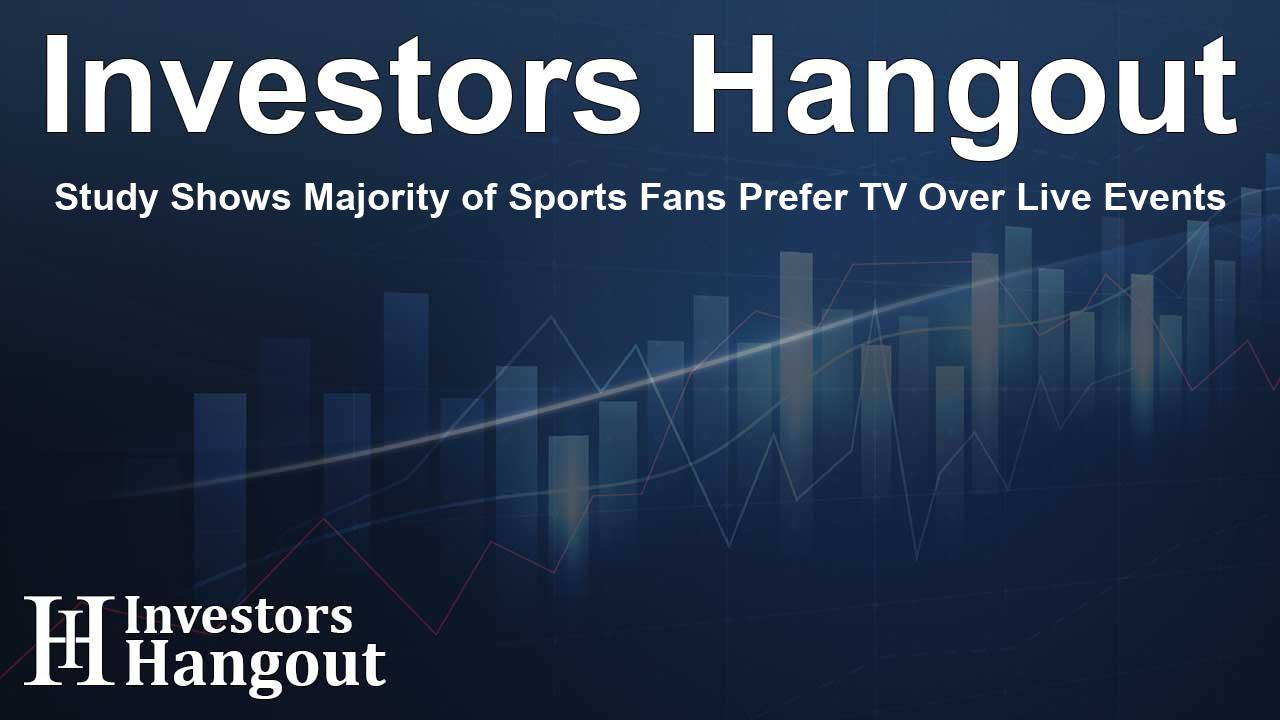Study Shows Majority of Sports Fans Prefer TV Over Live Events

Survey Results Highlight Sports Fans' Viewing Preferences
NEW YORK-- Today Effectv, the sales division of Comcast Advertising, released a fascinating report titled Behind the Remote: A Deep Dive into Sports Viewership & Fandom. This in-depth survey, which engaged a diverse group of American sports fans, reveals insightful trends about how and why viewers prefer watching sports.
Key Findings on Viewing Preferences
The report notably found that an impressive 85% of sports fans favor watching live sports on television instead of attending games in person. A significant factor in this choice highlighted by more than half of the respondents is the enhanced viewing experience that allows them to catch all the action from different perspectives.
Insight from the Executives
Pooja Midha, EVP and GM of Effectv, commented, “Sports content has always been a trusted avenue for advertisers to reach large, highly engaged audiences within premium, brand-safe inventory. Now, as football season kicks off and more live sports shift to streaming, advertisers of all sizes have greater opportunities than ever to connect with devoted fan bases at scale, even if they don’t have Super Bowl-sized budgets.”
Understanding Fan Engagement
The extensive study involved 1,000 participants, chosen to reflect the adult U.S. population who interacted with various forms of sports content – including live game coverage and sports-related shows – within the last six months. The findings suggest that sports fans dedicate an average of 3.2 hours weekly to consuming sports content.
Shifting Habits with Streaming
The survey results also illuminate how viewing habits among sports fans have transitioned alongside the expansion of live sports streaming. While 57% of fans still watch live sports on traditional television, a notable 46% subscribed to a streaming service specifically to follow a particular sport or major event. Impressively, 58% of these fans continue to subscribe due to the dedication of the service to their favorite sport.
Detailed Insights for Advertisers
The report highlights additional valuable insights, such as:
- 69% of fans will stick around until the last whistle, even if their team is losing.
- Ads shown during live sports are 47% more likely to be noticed by groups of 2 or more compared to non-sports traditional TV programs.
- Almost half of the sports fans maintain a positive perception of ads shown during live game coverage, while frequency and repetition are common complaints among those who find ads disruptive.
Market Opportunities in Sports Advertising
According to Travis Flood, Executive Director of Insights at Comcast Advertising, the demand for live sports content has reached unprecedented levels. Whether viewers are on traditional TV or streaming platforms, or even participating in real-time stats and betting, fans are actively engaging with their favorite sports content. Understanding that not all fans consume content uniformly is vital for advertisers seeking to maximize their reach and impact.
Strategic Recommendations for Advertisers
Finally, the report wraps up with actionable strategies for advertisers. These include recognizing the significance of casual fans, capitalizing on emerging opportunities from the expansion of live sports into streaming platforms, and customizing ad content for improved audience engagement.
Frequently Asked Questions
1. What percentage of sports fans prefer watching on TV?
According to the survey, 85% of sports fans prefer watching live sports on TV rather than attending in-person events.
2. How many hours a week do sports fans spend watching content?
On average, sports fans dedicate about 3.2 hours per week to watching various sports content.
3. What reasons do fans give for not attending live games?
Many fans cite the ability to watch all aspects of the game and the convenience of viewing from home as primary reasons for their preference.
4. How do ads in sports compare to non-sports programming?
Ads during live sports are seen 47% more frequently by groups compared to ads in traditional non-sports programming.
5. What insights do advertisers gain from this report?
Advertisers learn about the importance of engaging with different types of fans and adjusting their strategies to reflect fans' unique preferences and viewing habits.
About Investors Hangout
Investors Hangout is a leading online stock forum for financial discussion and learning, offering a wide range of free tools and resources. It draws in traders of all levels, who exchange market knowledge, investigate trading tactics, and keep an eye on industry developments in real time. Featuring financial articles, stock message boards, quotes, charts, company profiles, and live news updates. Through cooperative learning and a wealth of informational resources, it helps users from novices creating their first portfolios to experts honing their techniques. Join Investors Hangout today: https://investorshangout.com/
Disclaimer: The content of this article is solely for general informational purposes only; it does not represent legal, financial, or investment advice. Investors Hangout does not offer financial advice; the author is not a licensed financial advisor. Consult a qualified advisor before making any financial or investment decisions based on this article. The author's interpretation of publicly available data shapes the opinions presented here; as a result, they should not be taken as advice to purchase, sell, or hold any securities mentioned or any other investments. The author does not guarantee the accuracy, completeness, or timeliness of any material, providing it "as is." Information and market conditions may change; past performance is not indicative of future outcomes. If any of the material offered here is inaccurate, please contact us for corrections.